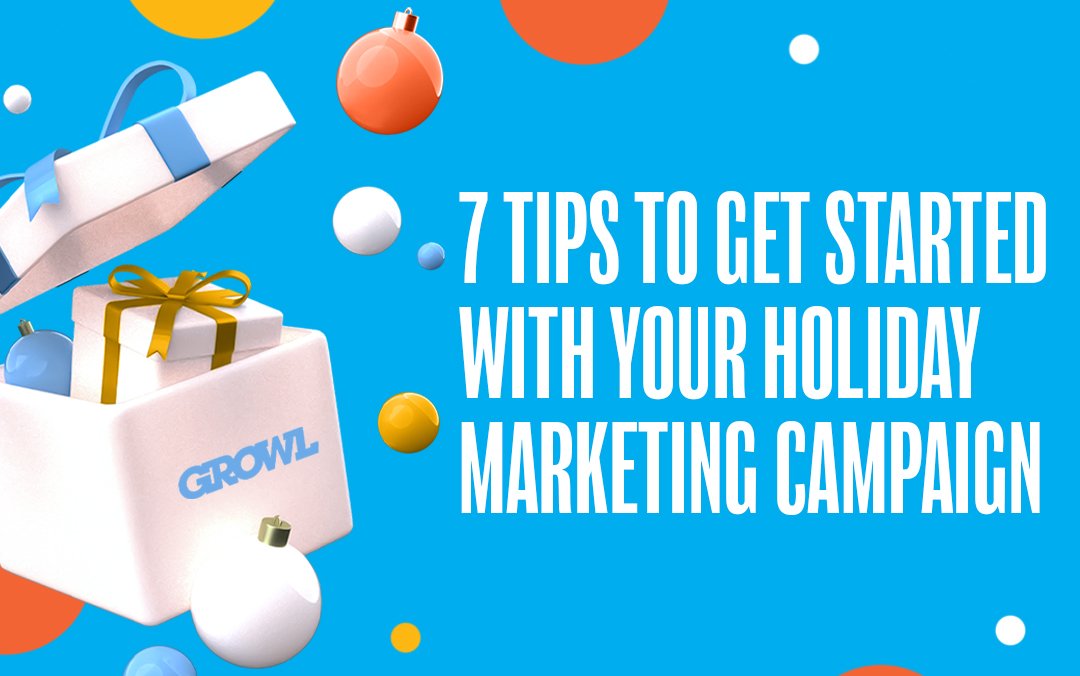1 Define Your Goals and Metrics.
The foundation for every good marketing campaign has clear and measurable goals. As we’ve outlined before, SMART goals are always in the back pocket of a good marketer. Without goals, you’re throwing spaghetti at a wall. Be intentional and specific—do you want to drive sales? Build brand awareness? Before you get started on any creative or strategy, lay out SMART goals as a roadmap to guide your holiday marketing campaign.
2 Know Your Audience
Marketing is not a one-size-fits-all effort. What works for your competitors may not work for you. The key to crafting an effective holiday marketing campaign is to know your target audience. Where are they shopping? Are they on desktop or mobile? What do they value? Knowing these answers will help you create a focal point to craft your campaign around. Use data insights to learn your audience’s habits, desires, and pain points so you can create personalized messages that speak to them.
3 Use an Omnichannel Approach
Whether they’re online, on mobile devices, on social media, in-store, or at an event, modern consumers interact with your brand through a variety of channels. Creating a unified experience with your messaging, brand, and user interface across these channels is called an omnichannel approach. The key to effective omnichannel marketing is marking sure your different channels aren’t siloed. Unify your design, messaging, goals, objectives, and branding across all channels, creating a seamless experience for your customer.
4 Guide Your Customers
If your goals include driving holiday sales, be sure to make your customer’s experience as seamless as possible. Part of an omnichannel approach to holiday marketing is allowing your different channels to inform each other and guide your customer along the buyer’s journey. For example, American Eagle uses an omnichannel approach from their website to their physical locations. A customer can browse jeans online and reserve a pair to try on in-store, making for a smoother journey and a likelier purchase. Explore ways you can implement this customer guidance in your holiday marketing campaign, such as utilizing Instagram Shopping.
5 Email, Email, Email
Even with so many holiday promotions stuffing your inbox at this very moment, email marketing remains one of the best ways to communicate with your audience. In fact, email is responsible for 20% of online holiday site visits. Here are some best practices for creating effective holiday marketing emails:
- Use brackets or parenthesis around important words or phrases in the subject line.
- Place a strategic emoji in the subject line or preview text,
- Revisit your SMART goals and audience evaluation to craft emails that provide value to your customers.
6 Small Business Saturday & Cyber Monday
While Black Friday remains a key date in a marketing calendar, don’t forget to leverage Small Business Saturday and Cyber Monday when applicable. Consumers spent nearly 10 billion dollars on Cyber Monday in 2020, a 24% increase from 2019. Leverage these dates by offering exclusive deals or discounts to your customers. If your strategy includes social media, don’t forget to use the hashtags #SmallBusinessSaturday and #CyberMonday.
7 Plan & Adapt
Plan from your launch date and work backward to give yourself time to get prepared. Creating a content calendar and publishing schedule will set a nice roadmap for your holiday campaign so you won’t be scrambling to put everything together. While sticking to your plan is important, be prepared to adapt. Your perfectly crafted email may be useless if it drives to a broken or slow-loading landing page. If you have a plan laid out and are prepared, you’ll be more able to rectify any issues that occur around your holiday campaign.
Ready to get started crafting a killer holiday marketing campaign? Use these tips and download GROWL’s Marketing Plan Template for FREE to create a campaign that converts.💪
